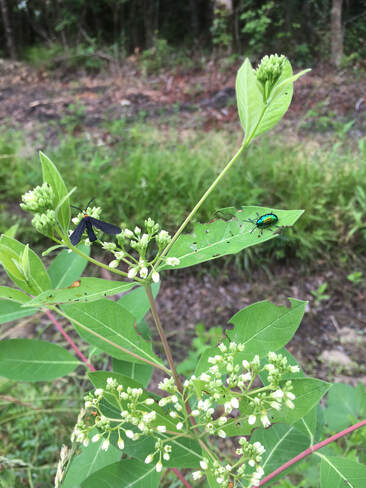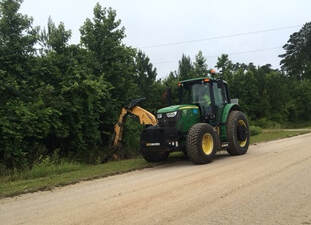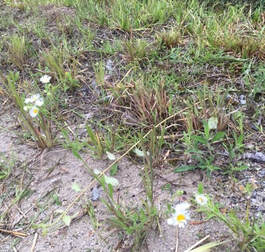 Grapeleaf Skeletonizer Moth and Dogbane Beetle on Indian hemp (dogbane) plant
Grapeleaf Skeletonizer Moth and Dogbane Beetle on Indian hemp (dogbane) plant It’s so fascinating to locate ‘new to me’ native plants that sprout along the pathway bordering the road. The roadside is my classroom.
Over the past few months, I’ve discovered plants like Indian hemp, also called Hemp Dogbane (Apocynum cannabinum). Historically, fibers from the plant’s stem were used by Native Americans to make bow strings, fishing lines, nets, cords, bags, and mats. Environmentally, the plant continues to serve as a primary food source for certain insect species, including two types of hummingbird moths.
What initially attracted my attention to the ordinary-looking plant were the bright green iridescent Dogbane Beetles (Chrysochus auralus) crawling around the leaves and flowers of the hemp plant. As the name implies, these beetles specialize in pollinating plants in the dogbane family.
To think, this beneficial plant with such a rich history grows underneath a speed limit sign, unnoticed by everyone traveling this road, except me.
Of course, grass, weeds, and brambles encountered no problems establishing a foothold along the route, yet it took a while for the wildflowers to make their mark on the landscape. But once they became established, the blossoms took off and really brightened up my morning walks.
It surprised me when I realized how several of the volunteers I ‘discovered’ play a key role in supporting native insects. Lanceleaf Coreopsis (Coreopsis lanceolata), Sweet Pepperbush (Clethra alnifolia), Wrinkleleaf Goldenrod (solidago rugosa), and Ohio Spiderwort (Tradescantia ohiensis) are all on the Xerces Society’s 75 most beneficial pollinator plants in the southeast. How’s that for hidden roadside treasures?!

I knew the day was coming - the day the county would mow the shoulders along my road. I just didn’t know when.
A few days ago, the dreaded bush hog made its appearance, and now all my lovely floral friends are gone. A few hours of noisy chopping and mowing transformed my lovely all-natural pollinator paradise into a wasteland of dirt and grass. It broke my heart. The naked bare earth looked so sad and lonely.

However, I’m proud of the Daisy Fleabane (Erigeron strigosus) that stood up to the monster mower. These little flowers were the sole survivors.
I already have these late-blooming natives growing in my yard. I gathered seeds last autumn and planted the winter-sown seedlings a few months ago. It’ll be neat to watch my garden transition from summer to autumn wildflowers while their cousins come to life and take over the roadside.
Nature is amazing. It continues to regenerate regardless of the obstacles put in its way. It astounds me how plants, trees, and shrubs can bounce back after being destroyed. Unfortunately, that’s not always the case. There is a limit to the abuse the natural world can withstand before giving up. I’m glad I have the opportunity to witness the magnificent cycle and do what I can to ensure it never ends.

 RSS Feed
RSS Feed
